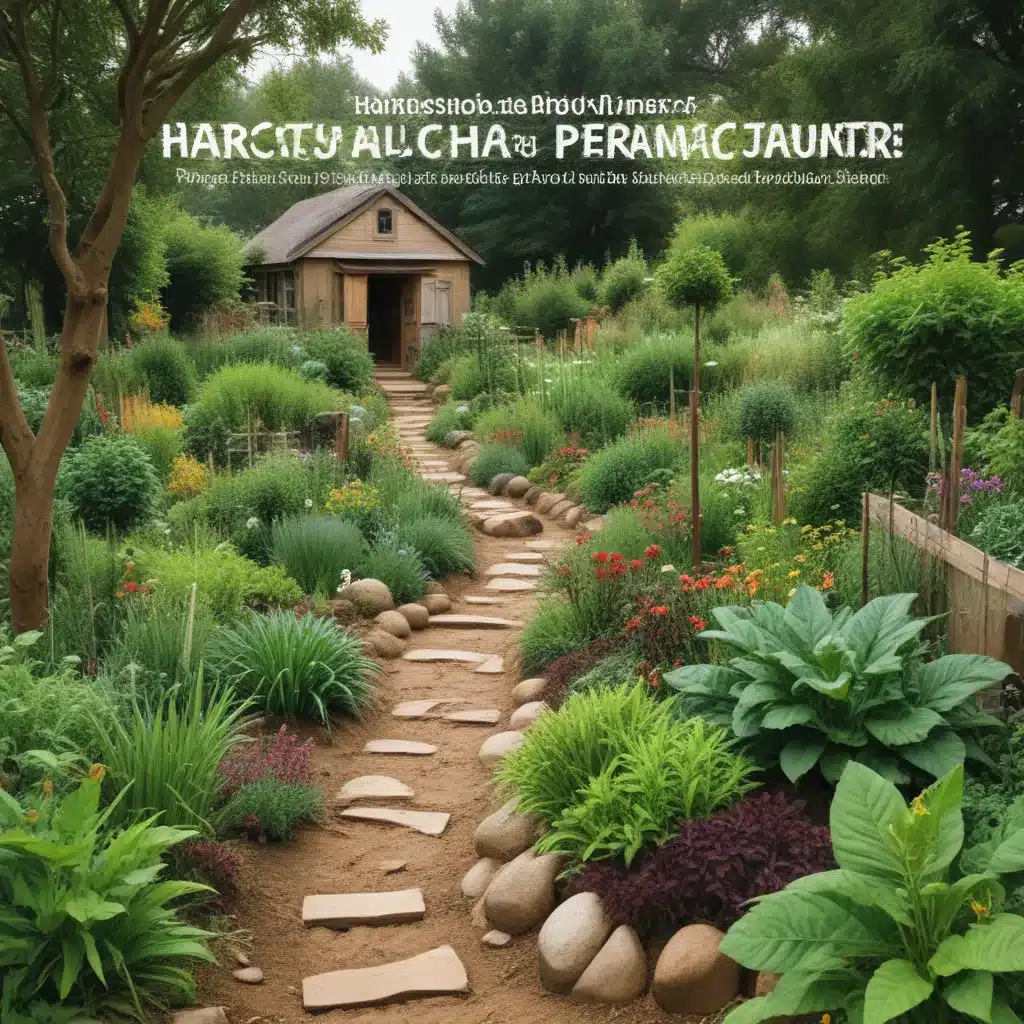
The principles of permaculture – a holistic design philosophy rooted in ecology – offer a powerful framework for crafting resilient, self-sustaining landscapes. At the heart of permaculture lies a fundamental shift in perspective: rather than viewing the garden or homestead as a resource to be exploited, permaculture encourages us to design integrated systems that mimic the patterns and relationships found in natural ecosystems. By embracing this holistic approach, TriCounty Tree Care can help clients harness the inherent ecological advantages of trees and other plants to create thriving, multifunctional landscapes.
Permaculture Foundations
Principles of Permaculture
The core tenets of permaculture, as outlined by its founders Bill Mollison and David Holmgren, provide a solid foundation for sustainable landscape design. These 12 guiding principles include “observe and interact,” “use and value renewable resources and services,” “produce no waste,” “integrate rather than segregate,” and “use small and slow solutions,” among others. Collectively, these principles encourage a thoughtful, responsive approach to landscape management that prioritizes long-term ecosystem health over short-term gains.
Ethics of Permaculture
Underpinning the permaculture design framework are three ethical principles: “care for the earth,” “care for people,” and “fair share.” These ethics prompt us to consider the holistic impacts of our actions, recognizing that the health of the land, the well-being of our communities, and the equitable distribution of resources are inextricably linked. By aligning our landscape designs with these ethical principles, we can foster resilient and regenerative systems that benefit both people and the environment.
Origins and Evolution of Permaculture
Permaculture emerged in the 1970s as a response to the unsustainable practices of conventional agriculture and landscape management. Developed by Australian scientists Bill Mollison and David Holmgren, the permaculture approach draws inspiration from traditional knowledge, agroforestry, and systems-based ecological thinking. As the concept has evolved, permaculture principles have been applied to diverse contexts, from urban gardening to community planning, demonstrating their versatility and relevance in the face of modern environmental challenges.
Sustainable Landscape Design
Holistic Ecosystem Approach
At the heart of permaculture lies a holistic perspective that views the landscape as an interconnected system, where each element (whether plant, animal, or structure) plays a vital role in supporting the overall health and productivity of the ecosystem. By designing with this systemic understanding, TriCounty Tree Care can help clients create landscapes that mimic natural patterns, fostering biodiversity, nutrient cycling, and ecological resilience.
Layered and Integrated Systems
Permaculture design emphasizes the creation of multilayered, integrated systems that maximize the efficient use of space and resources. Drawing inspiration from the diverse vertical strata of natural forests, permaculture landscapes often incorporate a “canopy” of tall trees, an “understory” of smaller trees and shrubs, a “herbaceous” layer of perennial and annual plants, and a “ground cover” layer – all working together to capture and store energy, build soil, and provide a variety of ecosystem services.
Resilience and Adaptability
Permaculture landscapes are designed to be resilient and adaptable, able to withstand and recover from disturbances, whether natural or human-induced. By cultivating diversity, incorporating redundancy, and embracing dynamic change, permaculture-inspired designs can help mitigate the impacts of climate change, pests, and other environmental stressors, ensuring the long-term viability and sustainability of the landscape.
Key Permaculture Techniques
Polyculture Planting
Rather than relying on monocultures, permaculture encourages the use of polycultures – diverse assemblages of complementary plant species that mimic the structure and function of natural ecosystems. These symbiotic relationships can enhance nutrient cycling, pest and disease resistance, and overall productivity, while also providing a wider array of harvestable goods and ecosystem services.
Water Management Strategies
Permaculture design places a strong emphasis on water management, recognizing its crucial role in sustaining healthy, resilient landscapes. Techniques such as rainwater harvesting, swales, and constructed wetlands can help capture, store, and utilize water more efficiently, reducing the need for external inputs and mitigating the impacts of drought or flooding.
Soil Health Practices
Healthy, fertile soil is the foundation of a thriving permaculture landscape. Permaculture embraces a range of soil-building practices, including composting, cover cropping, and no-till cultivation, to enhance soil structure, nutrient content, and microbial activity. By nurturing the soil’s natural cycles and functions, permaculture designers can create self-sustaining, productive landscapes that require fewer external inputs.
Designing for Function and Beauty
Aesthetic Considerations
While permaculture design prioritizes functionality and ecological integrity, it also recognizes the importance of aesthetic appeal. By incorporating native species, strategic plant placement, and sculptural elements, permaculture landscapes can be both visually stunning and ecologically harmonious, appealing to the senses while also supporting a diversity of life.
Multifunctionality and Resource Efficiency
Permaculture landscapes are designed to be multifunctional, providing a wide array of benefits beyond just food production or ornamental value. Trees, for example, can serve as windbreaks, shade providers, wildlife habitats, carbon sinks, and sources of timber or other non-timber forest products. This integrated approach** to resource utilization helps maximize the efficiency and productivity of the landscape.
Integrating Native Species
Permaculture design prioritizes the use of native plant species, which are often better adapted to local environmental conditions and support a greater diversity of native fauna. By incorporating these species into the landscape, TriCounty Tree Care can help clients create biodiverse, regionally appropriate designs that strengthen the ecological connections within the local ecosystem.
By embracing the principles and practices of permaculture, TriCounty Tree Care can help clients design and maintain landscapes that are not only visually captivating, but also ecologically resilient, resource-efficient, and aligned with the natural cycles of the local environment. Through this holistic, systems-based approach, we can cultivate landscapes that thrive without depleting their natural resources, serving as models of sustainable stewardship for generations to come.


